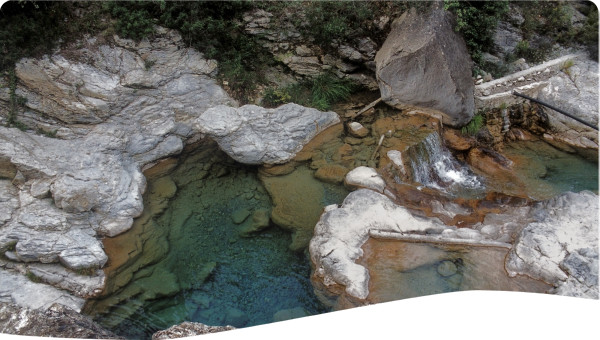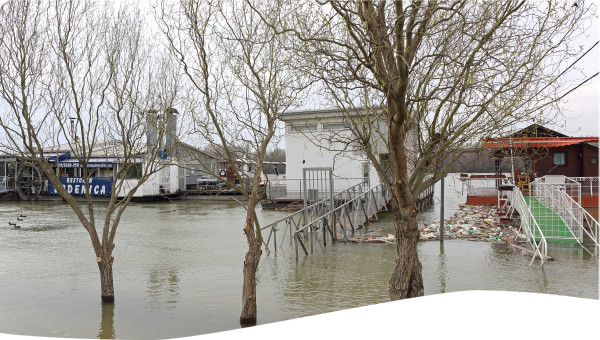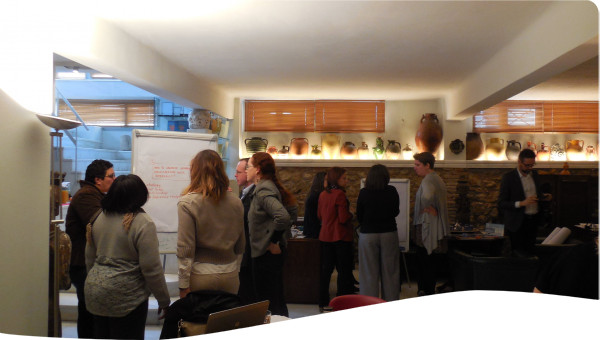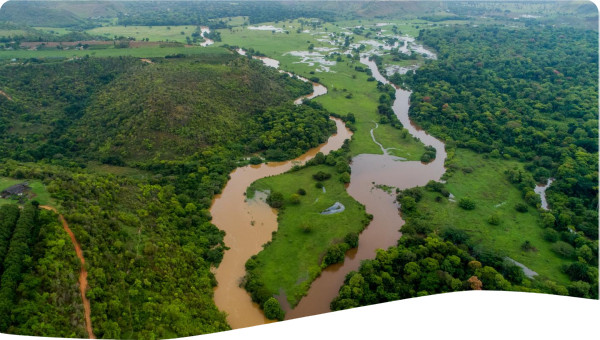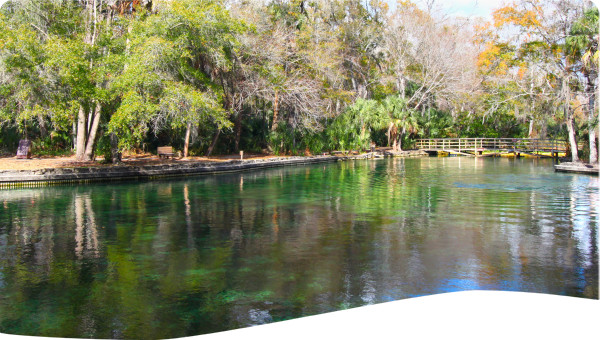 Tool -
Tool -
Groundwater resources are the most abundant source of freshwater, accounting for approximately 97% of the Earth’s total non-frozen freshwater supply (IGRAC, 2021). It is vital to some two billion people, farmers, private and public users and industries worldwide (Cap-Net/UNDP, 2010). It is a unique resource and differs significantly when compared to surface water resources. The differences are rooted in the varying physical and chemical environments in which they occur. Groundwater resources react more slowly, for example, having longer residence times and delayed or dispersed impacts from abstraction, in comparison to surface water. For this reason, recharge and remediation processes take longer thus requiring careful management.
To understand groundwater, we must first understand the geologic structure in which it resides. An aquifer can be defined as a geologic formation (single layer or group of layers) that can store and yield a significant quantity of water and this functionality is highly dependent on the nature of the water-bearing rock. Aquifers that are excellent sources of water for human usage are characterised as having a high occurrence of permeable materials such as sands, gravels and sandstones or highly fractured rock. Aquifers are sub-divided into two (2) main types:
- Unconfined or (free surface): referred to as water-table or phreatic aquifers, bounded by a free surface at the upper limit, resulting in the water being under atmospheric pressure.
- Confined or (under pressure): these aquifers are bounded by impervious or semipervious layers, under confined conditions, and the water may be under pressure (Cap-Net/UNDP, 2010). Figure 2 provides a visualisation of these two types of aquifers.
Figure 2. Diagram of an Aquifer System (Adapted from USGS, 2019)
Like surface water, groundwater resources can also be shared by different countries, and they are referred to as Transboundary Aquifers (TBAs). According to (IGRAC, 2021) there are now 468 globally identified transboundary aquifers and aquifer systems. Planning for TBAs is crucial towards identifying total abstraction rates, sources of pollution if present, multiple stakeholders shared across the countries, and the various socio-political and economic contexts that may affect its usage (see Tool C1.08 for information on Transboundary Diagnostic Analysis).
Groundwater resources like many other sources of water are confronted by a variety of challenges. Such challenges, therefore, set the stage and brings to the fore the necessity of Groundwater Management Plans aligned with IWRM principles. Some challenges are summarised and categorised below (Lall, Josset, and Russo, 2020):
- Decrease in Quality: The quality of groundwater becomes increasingly threatened via human activities within industrial and mining zones. For example, issues of heavy metal contamination are becoming prevalent due to landscape disturbance from mining activities resulting in the mobilisation of geogenic contaminants. The leakage of waste from mining activities which can be acidic and rich in metals, landfill seepage, agriculture effluents and energy activities also threaten quality. In addition to chemical threats, biological contamination is also on the rise due to latrines and improper sewage disposal.
- Over Abstraction: Excessive or high rates of over-extraction has led to land subsidence in many cities across the world (Lall, Josset, and Russo, 2020). This occurs when large amounts of groundwater have been withdrawn causing the rock to compact and fall onto itself, resulting in ground failure (USGS, 2018). Over abstraction can also contribute to saltwater intrusion, which particularly affects coastal aquifers (Werner and Simmons, 2009). Over abstraction can even result in infrastructural damage to buildings, buckling of highways and disrupted supply in water and wastewater drainage.
- Lack of Data and Information Management: Many global assessments underscore the need for better data to be able to quantify groundwater resources. Currently, there are some uncertainties regarding the volume, distribution, recharge, quality, and withdrawal of groundwater resources (Lall, Josset, and Russo, 2020).
- Administrative Fragmentation: Groundwater is a multifaceted resource and oftentimes call for inter-sectoral management. However, this is not always the case as conflict arises due to lacking policy integration (Tool A1.02) or coordination bodies (Tool B3.02). This challenge is exacerbated further when attempting to manage Transboundary Aquifers which cross national boundaries (Tools B3.01; C1.08). Sustainable groundwater management requires close coordination among agencies (UNESCO, 2021).
A cornerstone of groundwater management planning lies in understanding the aquifer system and its characteristics. Some basic information and data that is required to characterise an aquifer include (Cap-Net/UNDP, 2010):
- Storage: There is a need to look at the relationship between the type of aquifer and potential volume of water in storage, as this is a critical aspect to the aquifer system. Management must account for abstraction and aquifer use of the entire area especially where flow systems have hydraulic interconnections over large areas.
- Relationship between aquifer type, climate, and water supply options: The sustainability of groundwater development is a function of the prevailing climate, type of aquifer system, recharge rates, and scale of groundwater use.
- Groundwater Flow: The impact of groundwater flow is based on the type and extent of the hydrogeologic unit and must be discussed together with management implications.
- Groundwater Recharge and Discharge: Recharge refers to water which infiltrates the ground and reaches the water table. This should be assessed as it represents the input flow within the aquifer system and is an essential component of the groundwater balance.
- The Water Balance: Groundwater and surface water sources are hydraulically linked. Groundwater can contribute to streams and rivers and surface water can contribute to groundwater. The relationship and significance of groundwater quality and quantity to the maintenance of healthy surface water features like (rivers, streams, and wildlife habitats) are critical areas of concern for groundwater management systems.
- Water Quality: The quality of water stored in aquifers vary depending on its location, origin and exposure to potential sources of contamination of both human and natural origin. It is therefore important to locate areas and levels of naturally occurring and human-induced hazards within the system.
The development of groundwater resources requires detailed planning and insight into the current situation of the resource, requirements of the users and the enabling environment (Tools A). Planning and implementation should be closely interlinked, and groundwater management plans should take place in a progressive manner with many iterations. Figure 2 provides an example of a schematic representation of the planning and implementation process.
Figure 2. Planning and Implementation Process (Adapted from Cap-Net/UNDP, 2010)
Successful implementation of any groundwater management plan requires a complete strategic framework, along with practical action mechanisms, which can assist in the management and understanding of this resource. Here are building blocks and principles that should be reflected in the design of GWMPs (Fourie, 2020):
- Protection and Conservation: This requires aquifer use allocation and licensing, ecological zoning, land use planning, and waste management. Protection and conservation are also linked to the use of groundwater at the right time and the real purpose of the intended use. When other sources of water are available, groundwater can be conserved. For instance, the use of wastewater reuse mechanisms (Tool C3.03), can provide water for industrial purposes where the quality of water may not be of major concern, thereby reducing pressures on groundwater. In guiding protection and conservation some groundwater environmental principles include precautionary principle and pollution prevention, the principle of no significant harm and environmental impact assessment (Conti and Gupta 2015). Remote sensing and Geographic Information Systems (Tool C2.01) in groundwater exploration is a practical mechanism that can inform areas for protection/conservation (Nag, 2008).
- Infrastructure and Operation: The “link” between the aquifer and the user, is very important to monitor this linkage to ensure water reaches the user. In this regard, attention must be paid to the quality and efficiency of the country’s water infrastructure and operation, as this would influence how high or low the levels of wastage are, and this is a bi-product of abstraction volumes and activities. Quality and climate-resilient infrastructure can also lower the instances of Non-revenue Water (NRW) (van den Berg, 2015). Rules should also be considered and created at the borehole level, well fields and aquifer levels, which will guide users in how they should engage the resource when abstracting (Fourie, 2020).
- Monitoring, Use, and Information Management: Groundwater is vulnerable to the “tragedy of the commons” (DeYoung, 1999); as such, users must be aware of each other’s consumption to avoid conflict and to ensure there is equitable sharing of the resource for all. The management of groundwater is thus vital and can only be achieved through information and data gathering. One unique way to capture current real-time data is via the use of Real-Time Groundwater Management Systems. These monitoring systems are built to allow groundwater extraction and consumption monitoring (Hawari and Chantar, 2021). Monitoring, use, and information exchange shares linkages to the following social groundwater principles, equitable and reasonable use, human right to water and sanitation, and public access to information (Conti and Gupta, 2015).
- Institutional Arrangements: It is important to assess existing institutional arrangements and their level of coordination (Tools B3). Statutory institutional bodies are critical in creating an enabling environment for groundwater management. Consideration should be given to the national, regional, and local bodies charged with water resources management as well as the relationships with the private sector.
- Communication and Collaboration: Awareness and information sharing/communication (Tool B4.03) can encourage stakeholders to be more engaged in decision making processes. The establishment of Communities of Practice (CoPs) (Tool B4.03) and Multi-Stakeholder Partnerships (Tool B3.05) can create a space for exchange and joint action, where experts and non-experts can discuss management mechanisms, challenges, current developments, lessons learnt and recommendations in groundwater management. This would create a constant communication and information flow mechanism, thereby improving the “visibility” of groundwater resources (UN-Water, 2018).
- Economic and Financial Instruments: When improving groundwater management attention must be paid to the financial viability of water management systems, the use of subsidies, and the instruments which alter the way water is being used. Financial instruments provide a means of fundraising to finance activities of both an operating and capital nature (Tools D2). It also aids in making specific investment decisions. Economic instruments are charges levied towards encouraging people to change their behaviour in a particular direction (Tools C4). Some examples include tariffs, subsidies, water trading, abstraction fees, and effluent charges. Cap-Net/UNDP (2010) describes how to apply economic and financial instruments in groundwater management.
